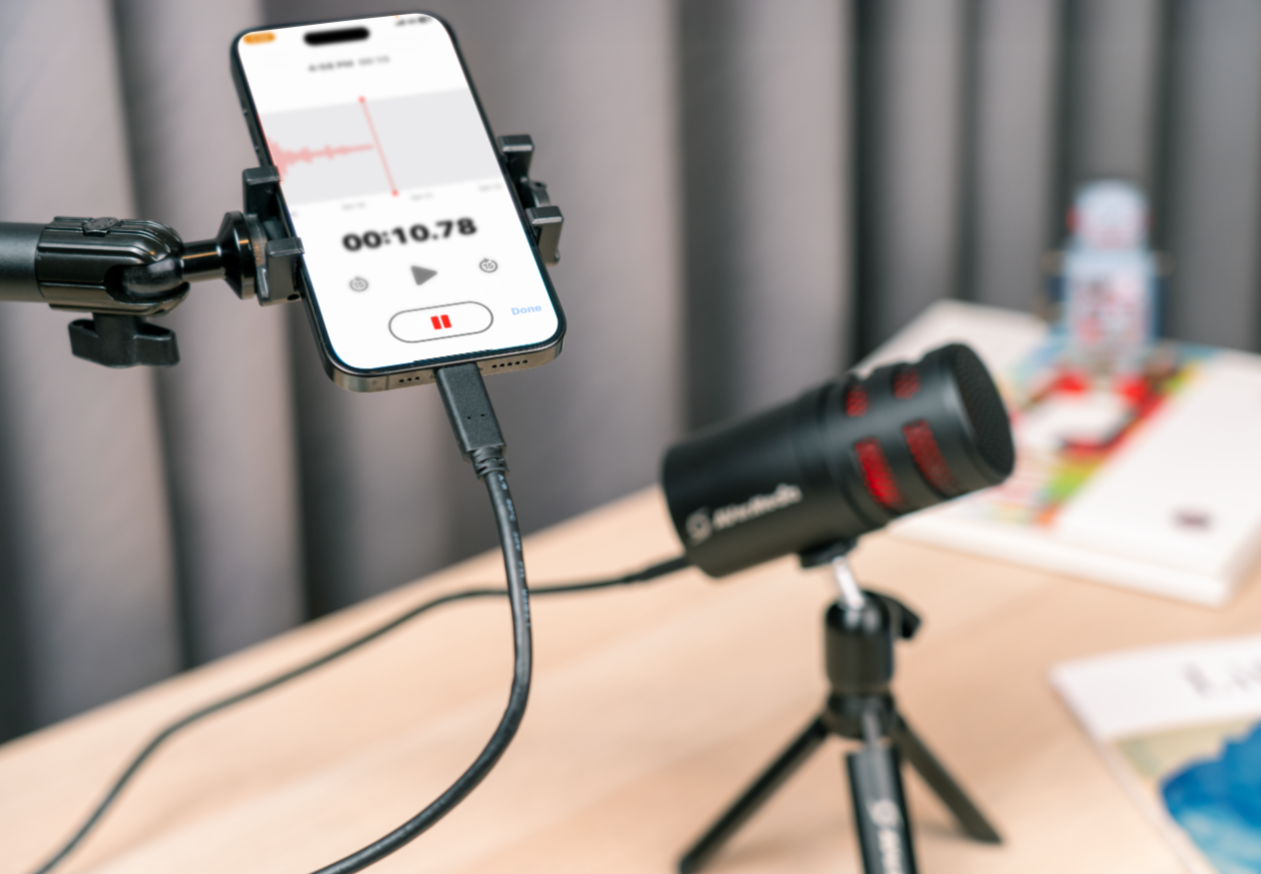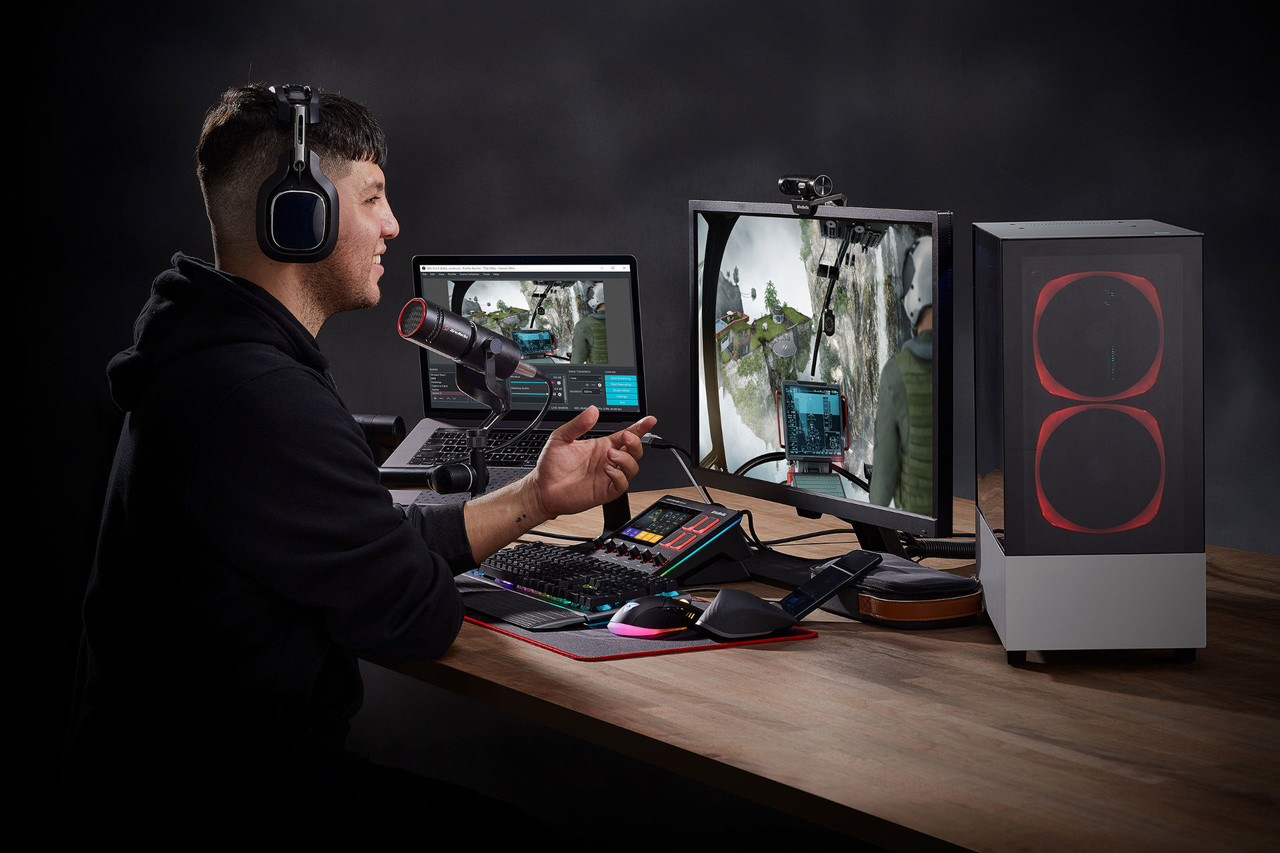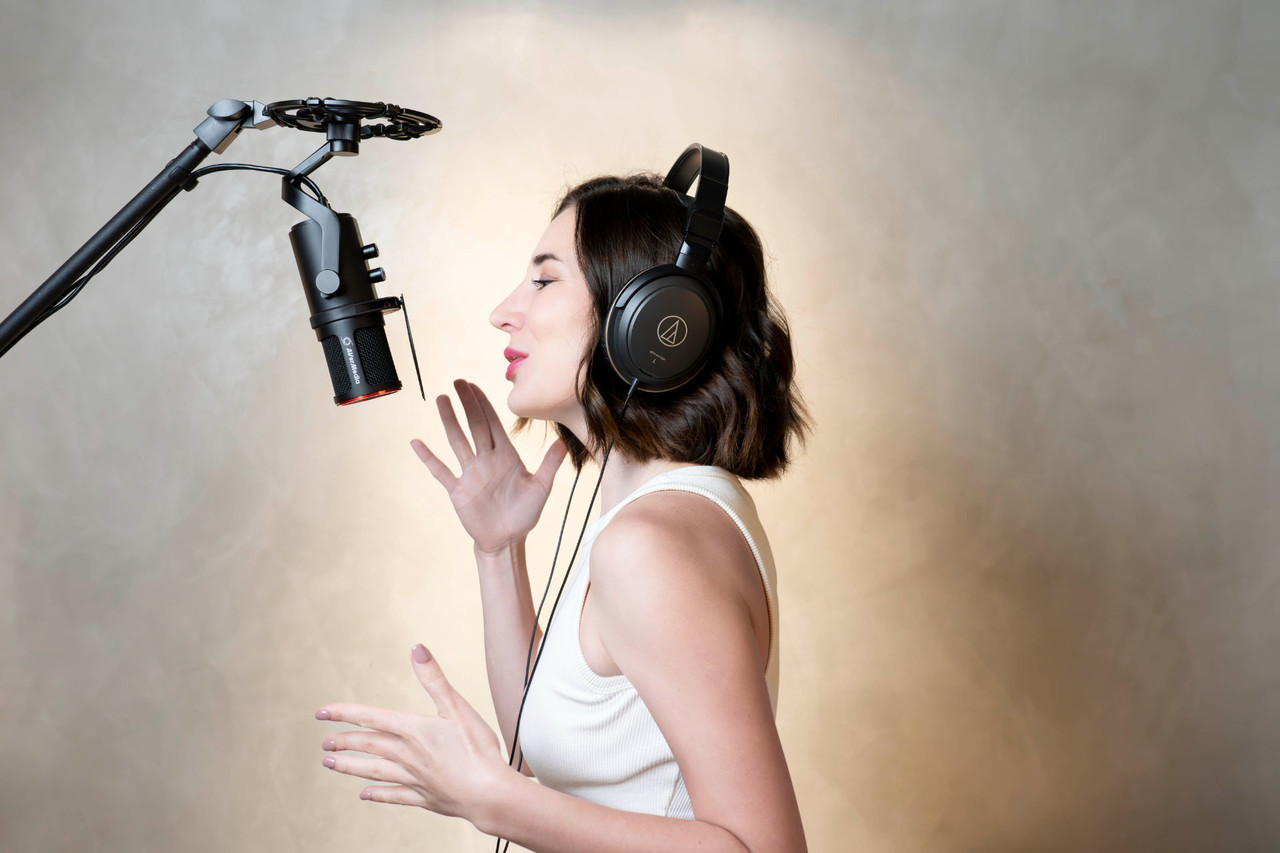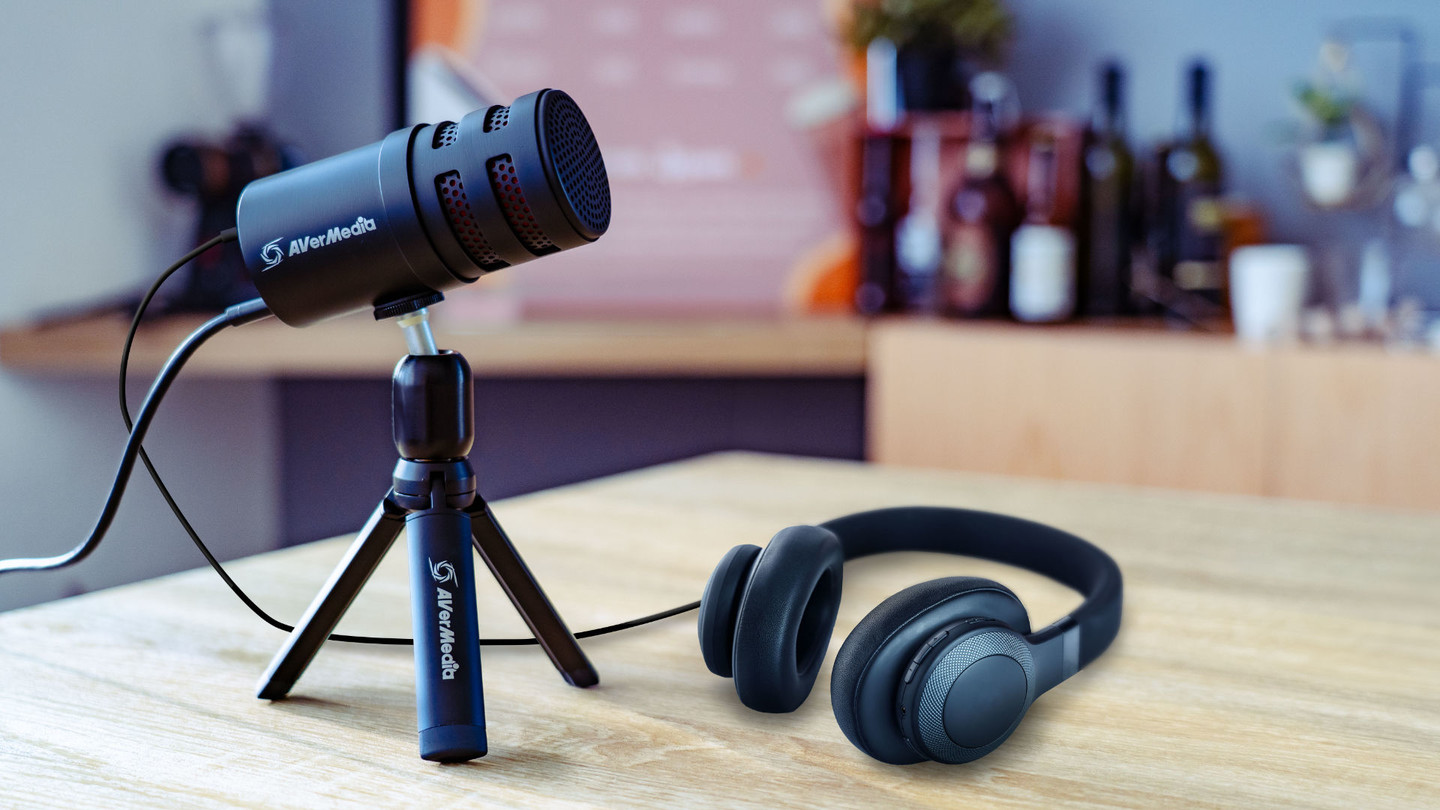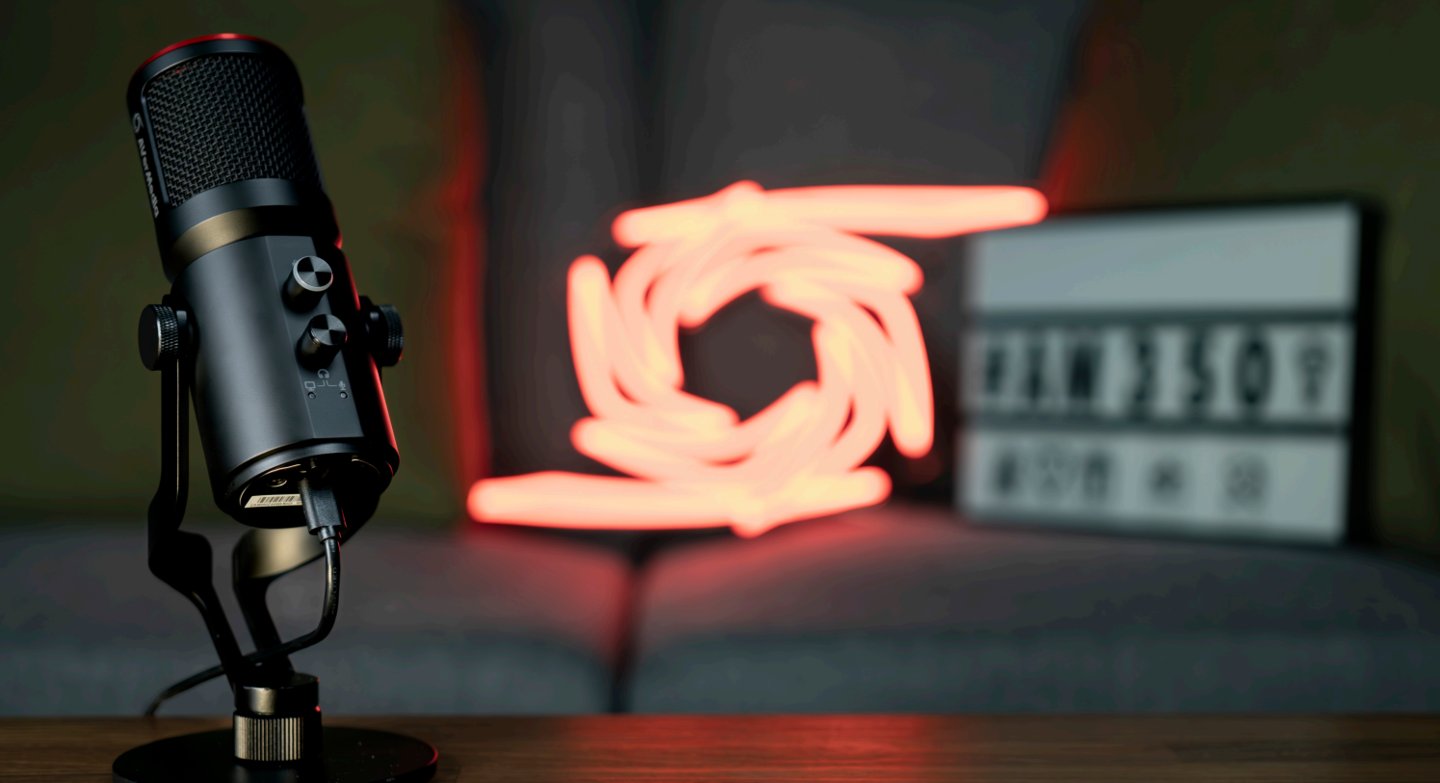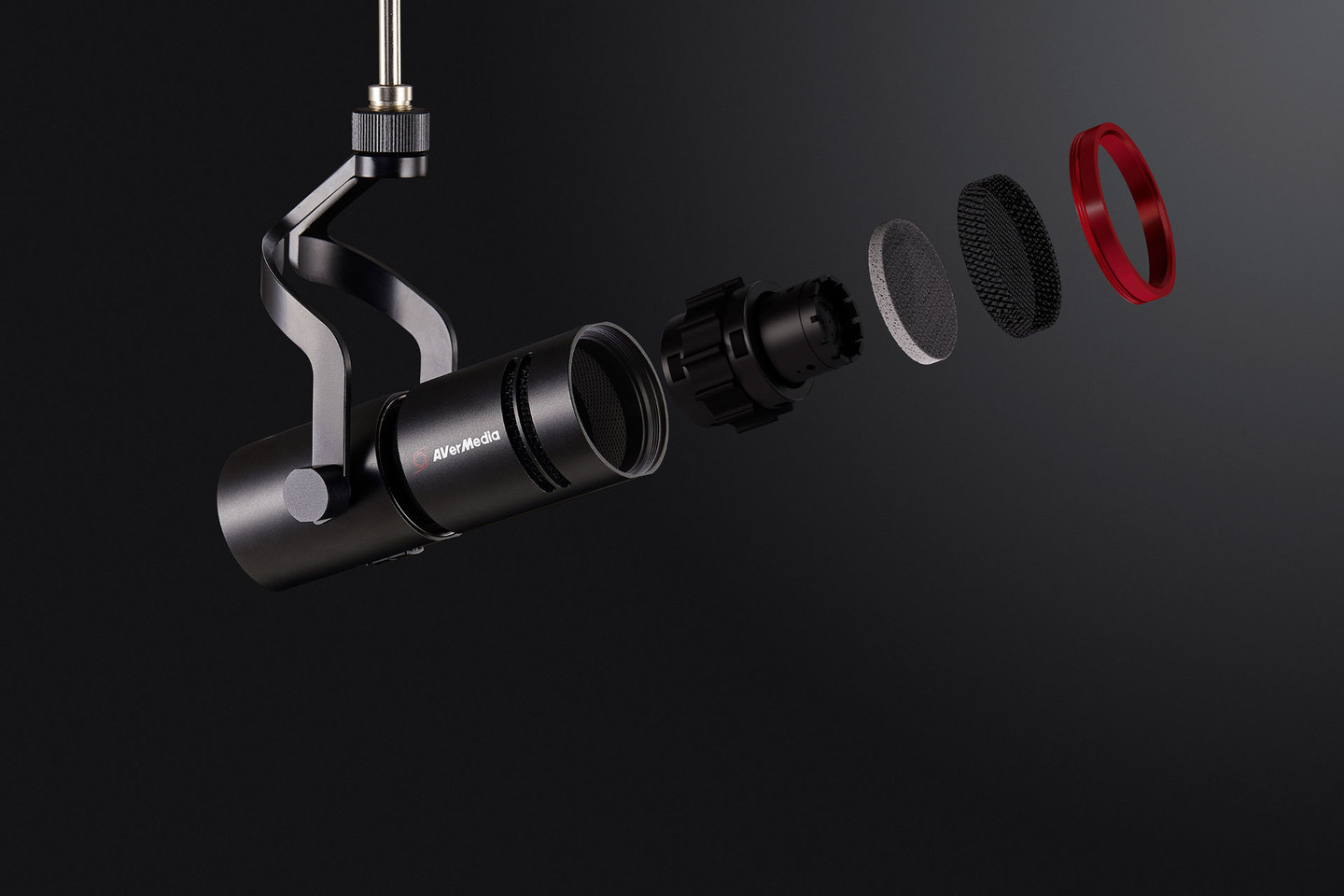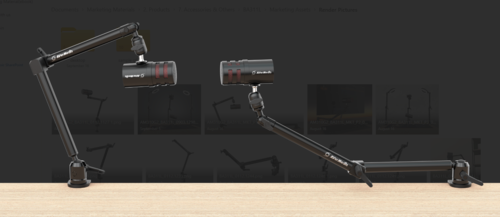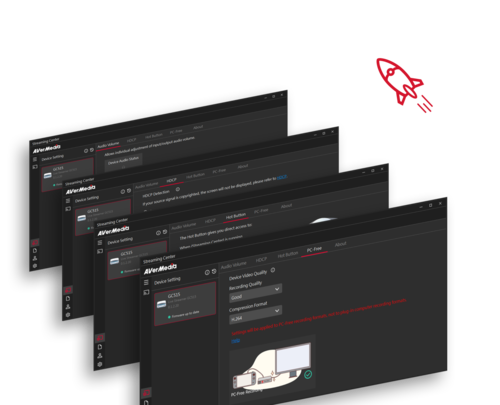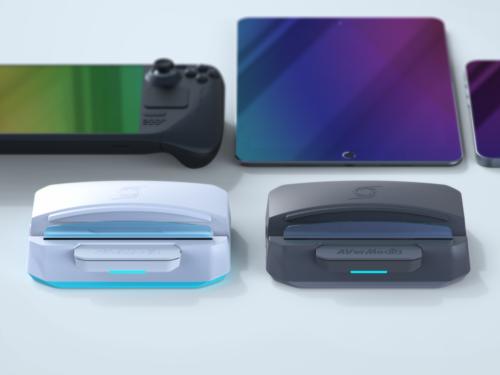Whether you're a podcaster, content creator, or performer, selecting the right microphone can significantly impact the quality of your recordings or live sessions. The decision often boils down to understanding three key factors: type of connection, polar pattern, and microphone type. Let's explore how each factor influences your microphone choice and how you can make the best decision based on your specific needs, especially if you plan to use it with devices like an iPhone, Android phone, iPad, tablet, MacBook, or PC.
Type of Connection: USB, XLR, and Smart Devices Compatibility
The connection type determines how your microphone communicates with your recording device or audio interface. The two most common options are USB and XLR. A growing trend is that many USB microphones are now designed to work with smart devices like iPhones and iPads, Android phones and tablets, making them versatile for mobile recording.
USB Microphones
USB microphones are popular due to their plug-and-play convenience. They connect directly to your computer, making them ideal for beginners, solo podcasters, or creators who want to keep things simple. USB mics often come with built-in audio interfaces, meaning they don't require any additional equipment. This is particularly useful for remote work, virtual meetings, or recording with minimal gear. Some USB microphones can also be connected to smartphones and tablets, making it easy to record on the go, whether using an iPhone, Android phone, iPad, or tablet.
Pros:
- Easy setup
- Compatible with most devices
- Budget-friendly and portable
Cons:
- Limited sound customization
- May lack professional audio quality in complex setups
Ideal for: Streamers, remote workers, and those recording podcasts or tutorials from home or while traveling.
XLR Microphones
XLR microphones are the go-to choice for professional recording environments. They connect via a 3-pin XLR cable to an external audio interface or mixer, allowing greater control over sound quality. XLR mics offer superior sound fidelity and are typically used in professional studios, live performances, and complex multi-mic setups.
Pros:
Superior audio quality
Versatile in studio or live settings
Supports advanced sound customization
Cons:
- Requires additional gear (audio interface, cables, etc.)
- More expensive
Ideal for: Musicians, voice-over artists, podcasters with multiple hosts or guests, and professionals in high-quality audio production environments.
Polar Patterns: Picking Up Sound the Right Way
A microphone's polar pattern describes how it picks up sound from different directions. Understanding polar patterns is crucial for determining the right mic for your specific recording environment and needs, especially if you're conducting an interview or recording in a noisy environment.
Cardioid Polar Pattern
Cardioid microphones are the most common type, designed to capture sound directly in front of the mic while rejecting sound from the sides and rear. This pattern is ideal for situations where you want to isolate your voice from background noise, making it a top choice for streamers, solo podcasters, and vocalists.
Pros:
- Great for isolating vocals
- Reduces background noise
Cons:
- May not capture natural room ambience
Ideal for: Podcasts, live streaming, solo vocal recordings, and voice-overs.
Omnidirectional Polar Pattern
Omnidirectional microphones capture sound equally from all directions. These are useful in scenarios where you want to record a group of people or capture ambient sounds.
Pros:
- Captures sound from all directions
- Ideal for natural sound reproduction
Cons:
- Prone to picking up unwanted noise or echo in noisy environments
Ideal for: Conference calls, group interviews, and recording nature or ambient soundscapes.
Bi-directional (Figure-8) Polar Pattern
Bidirectional microphones pick up sound from the front and back while rejecting sound from the sides. This is especially useful for interviews where two people sit across each other.
Pros:
- Perfect for two-person interviews
- Reduces side noise
Cons:
- Limited to front-and-back recording
Ideal for: Face-to-face interviews, duets, and specific recording techniques in music production.
Microphone Types: Dynamic vs. Condenser
The type of microphone itself plays a crucial role in how it captures sound and performs in different environments. Whether you're using it with a smartphone, computer, or audio mixer, choosing between dynamic and condenser microphones can make a big difference in sound quality.
Dynamic Microphones
Dynamic microphones are known for their durability and ability to handle high sound pressure levels (SPL). They are less sensitive to ambient noise, making them perfect for live performances, loud environments, or recording louder sound sources like drums and electric guitars.
Pros:
- Rugged and durable
- Can handle high volumes
- Doesn't require external power (phantom power)
Cons:
- Less sensitive to fine details
- May not capture the full dynamic range in studio recordings
Ideal for: Live performances, drums, amplified instruments, and environments with loud background noise.
Condenser Microphones
Condenser microphones are highly sensitive and offer superior sound clarity, making them ideal for studio recordings. They require phantom power from an audio interface or mixer and excel at capturing fine details in vocals, acoustic instruments, and ambient sounds. If you're looking to record high-quality audio, a condenser mic is often the best choice.
Pros:
- High sensitivity and detail
- Excellent for capturing a wide frequency range
Cons:
- Fragile and not ideal for live performances
- Prone to picking up unwanted noise in untreated rooms
Ideal for: Studio vocals, acoustic instruments, and controlled recording environments.
Being in the audiovisual industry for over 30 years and tapping on its technical expertise, AVerMedia offers a range of microphones that cater to different use cases, including the newly released VERSATI go (AM310G2) microphone. Learn more about AVerMedia's microphone below.
(1) USB C, Cardioid, Condenser Mic: VERSATI go (AM310G2)
(2) USB C, Cardioid and Omnidirectional, Condenser Mic: Live Streamer MIC 350 (AM350)
(3) XLR, Cardioid, Dynamic Mic: Live Streamer MIC 330 (AM330)
Choosing the right microphone depends on your specific use case, the devices you'll be using, and the environment you'll be recording. Whether you need a microphone that plugs into your smartphone, MacBook, or PC or one designed for a more professional setup, understanding the type of connection, polar pattern, and microphone type is essential.
USB microphones offer easy setup and compatibility with smart devices, making them perfect for beginners and on-the-go recording. In contrast, XLR microphones provide superior audio quality for professional setups. When selecting a polar pattern, think about whether you need to isolate sound or capture the full ambience of a room. Finally, consider the microphone type — dynamic for live and loud environments and condenser for studio-quality recordings.
With the right microphone, you'll be well on your way to producing top-notch audio for podcasts, interviews, music, or any other creative project. So, happy recording!
RECOMMENDED

